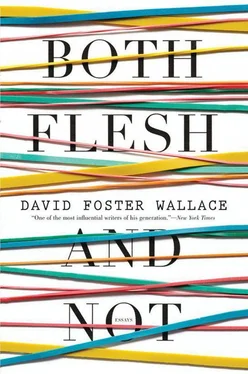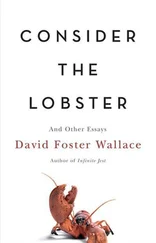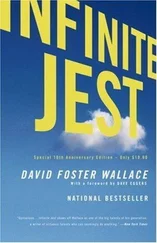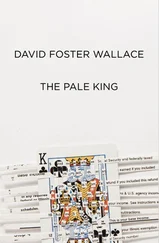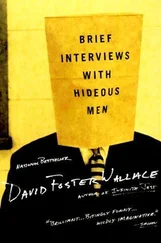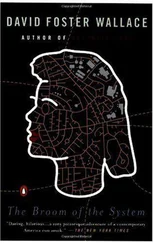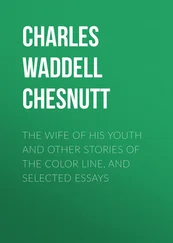32 this community being nothing other than sexual society as limned by the males who wrote scripture & epic, these males themselves interpreted & transfigured by Mr. Markson…
33 p.9
34 p.24
35 p.52
36 p.225
37 “The world is everything that is the case. The world falls apart into facts.”
38 Very cool elaborations on this sort of move are observable in J. L. Austin’s How to Do Things with Words & Stanley Cavell’s “Must We Mean What We Say?”
39 Q.v. PI I, 23…
40 Q.v. Alan Parsons Project’s dirge-like “Time,” late ’70s.
41 Tachyons & causality violations & the Superposition Principle all complicate W’s point quite a bit, and actually there’s very interesting stuff starting to appear in industrial mags about deep affinities between ordinary-language temporal locutions & cutting-edge quantum models… but anyway you get the idea.
42 the famous & infamous Familienahanlichkeiten (no kidding) — c.f. The Blue Book 17 & 87 & 124 or Philosophical Grammar 75 or PI I, 67. For equally famous stuff on games & rules see PI I, 65–88.
43 PI I, 109…
44 PI I, 123, a profound little offering meaning roughly to point out that we are now & forever “down here” in language, inside it, on ground-level, & thus have no better a view of the Big Picture than someone earthbound in contrast to someone aloft who can look down at the earthbound guy & the terrain around him, discerning patterns against backdrops of other bigger patterns, seeing them as patterns of something larger instead of as the — bound man’s terrain, maze, world, total…
45 note in passing that themes of nomination-as-enfranchisement, presence-as-privilege, also run through much of the feminist theory with which this novel’s author reveals himself familiar…
46 i.e., she’s doing it for mental survival, not for interest or acclaim or tenure…
47 I keep waiting for feminist theorists to start talking about deterioration as a textual phenomenon; it would be the sort of wry joke that captures truths: “deterioration” is essentially “deconstruction” made passive, observed rather than performed, the reader the ultimate “absentee” in the post-structural totem of absence: one of the things Kate’s story unpacks is the terrific power of writer-as-witness, utterly passive, unheard: it might be this more than what’s argued in the main body below that’s skepticism’s feminist vishna.
48 I won’t waste anybody’s time shouting about what a marvelous inversion of the Cogito & Ontological Argument this is.
49!!!!!
50 Tractatus 6.54
51 from my male p.o.v….
1 “A U.S.T.A. Event.”
2 Actually, if you count the Grandstand Court’s annex, the whole thing looks more like an ablated head w/neck-stump.
3 There’s always something extremely delicate and precarious and vulnerable-looking about the umpire’s shoes projecting out over the court from a height in little metal stirrups — the blend of authority and precarious vulnerability is just one of the things that makes a tennis umpire such a compre verelling part of the whole show.
4 The tentish tops and near-Bermuda-length shorts of M. Jordan and the NBA have clearly infiltrated tennis. Nearly half the men in the 128 draw are wearing clothes that seem several sizes too big, and on players as fundamentally skinny and woebegone-looking as Sampras the effect is more waifish than stylish — though I have to say that weirdly oversized clothes aren’t near the visual disaster that Agassi’s new clunky black sneakers (also imported from basketball fashion) are.
5 (looking more like ball- grad-students , here, actually — several have earrings and leg hair, and one on the south side’s got a big ginger beard)
6 The Open’s crowds, I know, are legendary for being loud and vulgar and generally psycho, but I’ve got to say that most of the audiences for most of L.D.W.’s matches seem like people you’d be proud to take home and introduce to the folks. The odd bit of audible nastiness does sometimes issue from way up top in the Stadium’s bleachers, but then usually only when there’s been some missed call or flagrant injustice.
7 Females in the crowds of this year’s Australian Open apparently screamed and fainted and made with Beatlemania-like histrionics whenever Rafter or Philippoussis appeared, and it’s true that on the court they are both extremely handsome guys; but it’s also true that Mark Philippoussis, close up, looks amazingly like Gaby Sabatini — I mean amazingly, right down to the walk and the jaw line and the existentially affronted facial expression.
8 The Open’s slow DecoTurf, which various rumors allege has had some kind of extra abrasive mixed in to make it even slower for the Open, favors the power-baseline game of Agassi, Courier, et al. — even netophiles like Edberg and Krajicek have been staying back and whaling through the first two rounds.
9 The Open’s administration is smart about providing the right visual backdrop for world-class play. The Stadium Court at the du Maurier Ltd. in Montreal this July had yellow bleachers at the north end that, according to players, made it tough to track balls coming from that end, whereas the N.T.C.’s Stadium’s got blue tarps and white chairs and gray chairs, and even the bleachers are high-contrast red — there’s nothing even close to the YG part of the spectrum unless you count the pale-yellow shirts of the Security guys who stand court-side with the crossed arms and beady eyes of Secret Servicemen. (I’ve got to think the whole Seles thing is behind the high-profile Security here.)
10 The tarp ads around pro tennis courts function like ads on subways, I think. Ads on subways exploit the fact that subway rides present both a lot of mental downtime and a problem with what to look at — the windows are mostly dark, and looking directly at other people on the subway is an action that the lookee can interpret in a number of ways, some of which are uncomfortable or even hazardous — and the ads up over the windows are someplace neutral and adverting to rest the eye, and so they usually get a lot of attention. And tennis is also full of downtime — periods between points, changeovers between odd games — where the eye needs diverting. Plus, during play, the tarp acts as the immediate visual background to the players, and the eyes and cameras always follow the players — including TV — so that having your company’s name hovering behind Sampras as the camera tracks him is a way both to get serioh talwus visual exposure for your company and to have that name associated, even on a subliminal level, with Sampras and tennis and excellence in general, etc. It all seems tremendously sophisticated and shrewd, psychologically speaking.
11 See FN#1 again — the strong sense I got was that you are never to say “The U.S. Open” in any kind of public way without also saying “A U.S.T.A. Event.” Let’s let the U.S.T.A.’s promotional appendix be implicit from now on; I don’t feel like saying it over and over. The United States Tennis Association gets something like 75 percent of its yearly operating revenues from the U.S. Open, and it’s probably understandable that it would want to attach its name like a remora to the tournament’s flank, but the constant imposition of “A U.S.T.A. Event” all over the place got a little tiresome, I found, overtaxing the way relentless self-promotion is overtaxing, and I have to say I got a kind of unkind thrill out by the Main Gate’s turnstiles when so many people coming in for the evening session of matches pointed up at the big sign over the Main Gate and asked each other what the hell “USTA” was, making it rhyme with a Boston pronunciation of “buster” or “Custer.”
Читать дальше
